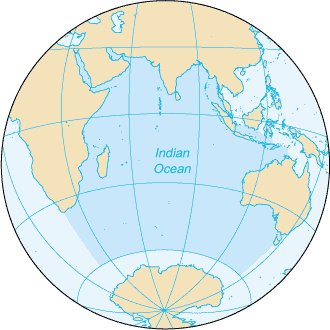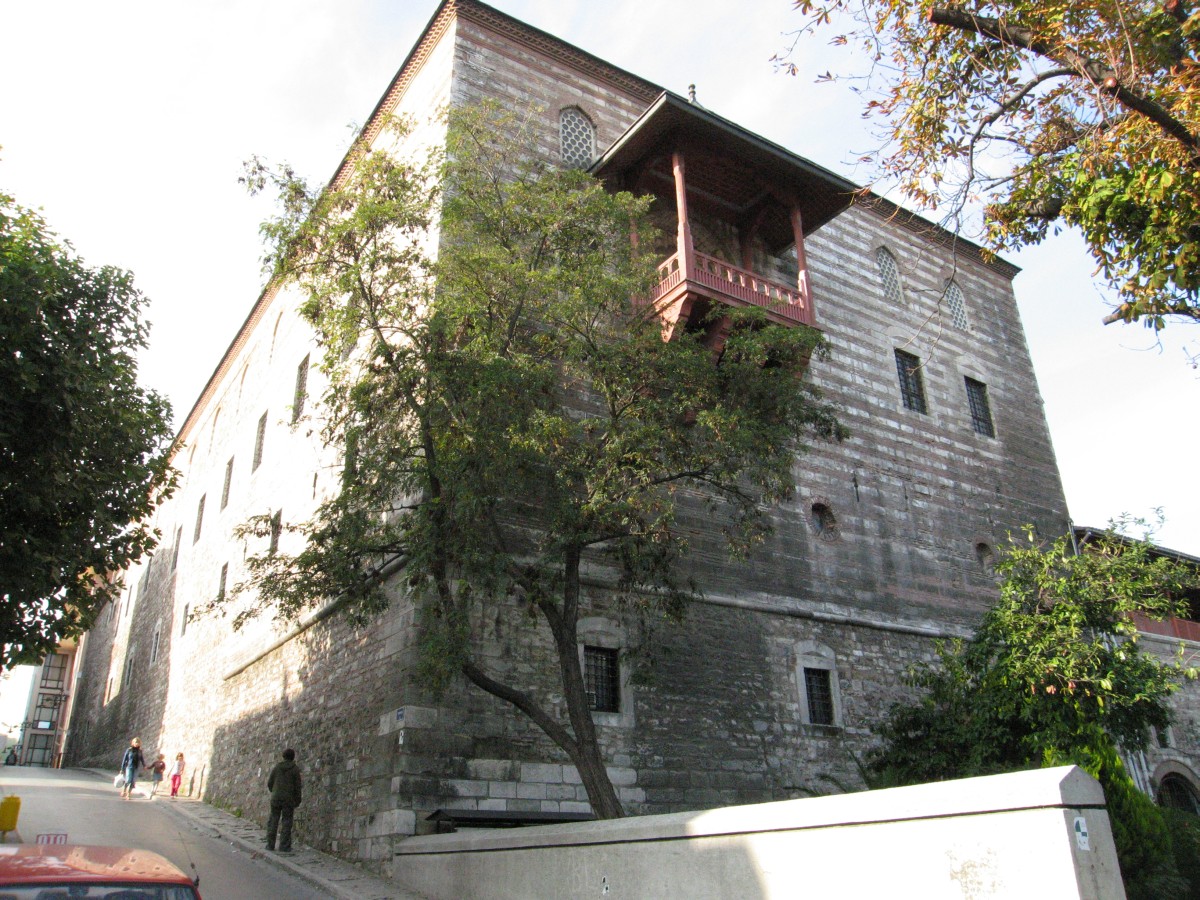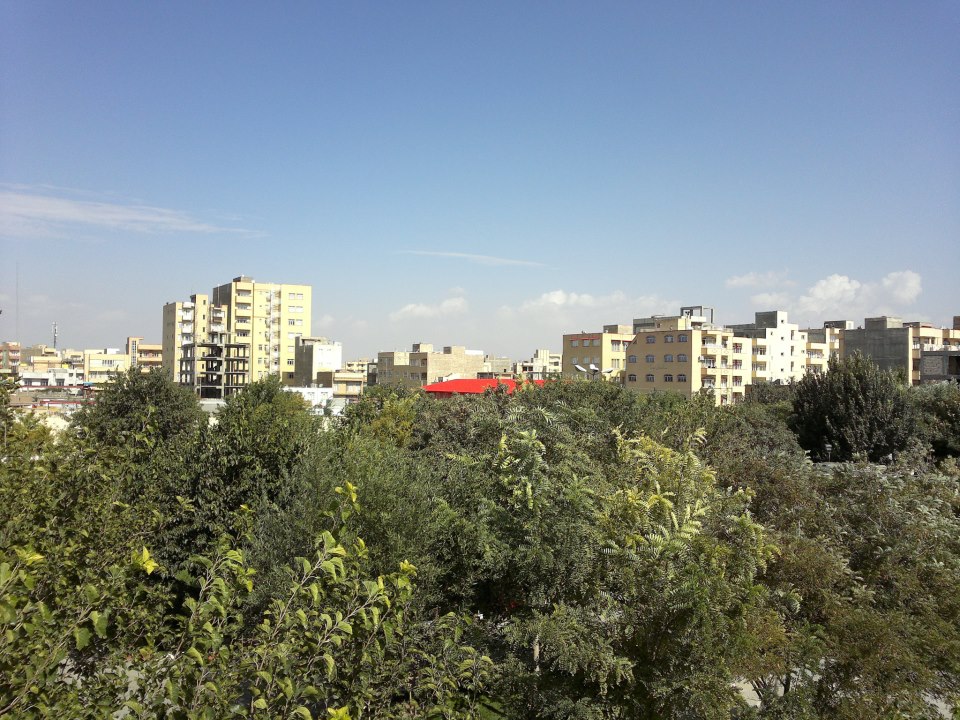|
Shanb Ghazan
Shanb-e-Ghazan, Ghazaniyya, or Sham-e-Ghazan (local pronunciation: Sham-Ghazan) is one of the historical neighborhoods of Tabriz, Iran. Shanb-e-Ghazan's historical importance is mostly due to construction of a palace which later turned to the thumb / mausoleum of Ghazan Khan, the Ilkhanid emperor in late 13 and early 14th century. History At the time of the Ilkhanate and Arghun Khan's kingdom in 1290, Shanb-e-Ghazan grew from a village named Shanb or Sham into a large and populous town named Arghuniyye. The main parts of this construction included a Buddhist temple (Arghun was a Buddhist) and a palace named Adiliyya. At the time of king Mahmud Ghazan, Ghazan Khan, Shanb-e-Ghazan evolved into a large satellite city of Tabriz called Ghazaniya. The neighborhood reached its greatest prosperity at this time. In late 1297 Ghazan Khan built his unique Tomb called Qubba-ye-Aali (Big Dome) in the central part of the town. As he was very interested in benevolence, he ordered the cons ... [...More Info...] [...Related Items...] OR: [Wikipedia] [Google] [Baidu] |
Shafi'i School
The Shafii ( ar, شَافِعِي, translit=Shāfiʿī, also spelled Shafei) school, also known as Madhhab al-Shāfiʿī, is one of the four major traditional schools of religious law (madhhab) in the Sunnī branch of Islam. It was founded by Arab theologian Muḥammad ibn Idrīs al-Shāfiʿī, "the father of Muslim jurisprudence", in the early 9th century. The other three schools of Sunnī jurisprudence are Ḥanafī, Mālikī and Ḥanbalī. Like the other schools of fiqh, Shafii recognize the First Four Caliphs as the Islamic prophet Muhammad’s rightful successors and relies on the Qurʾān and the "sound" books of Ḥadīths as primary sources of law. The Shafi'i school affirms the authority of both divine law-giving ( the Qurʾān and the Sunnah) and human speculation regarding the Law. Where passages of Qurʾān and/or the Ḥadīths are ambiguous, the school seeks guidance of Qiyās (analogical reasoning). The Ijmā' (consensus of scholars or of the community) ... [...More Info...] [...Related Items...] OR: [Wikipedia] [Google] [Baidu] |
Suleiman The Magnificent
Suleiman I ( ota, سليمان اول, Süleyman-ı Evvel; tr, I. Süleyman; 6 November 14946 September 1566), commonly known as Suleiman the Magnificent in the West and Suleiman the Lawgiver ( ota, قانونى سلطان سليمان, Ḳānūnī Sulṭān Süleymān) in his realm, was the tenth and longest-reigning Sultan of the Ottoman Empire from 1520 until his death in 1566. Under his administration, the Ottoman Empire ruled over at least 25 million people. Suleiman succeeded his father, Selim I, as sultan on 30 September 1520 and began his reign with campaigns against the Christian powers in central Europe and the Mediterranean. Belgrade fell to him in 1521 and the island of Rhodes in 1522–23. At Mohács, in August 1526, Suleiman broke the military strength of Hungary. Suleiman became a prominent monarch of 16th-century Europe, presiding over the apex of the Ottoman Empire's economic, military and political power. Suleiman personally led Ottoman armies in ... [...More Info...] [...Related Items...] OR: [Wikipedia] [Google] [Baidu] |
Pargalı Ibrahim Pasha
Pargalı Ibrahim Pasha ("Ibrahim Pasha of Parga"; c. 1495 – 15 March 1536), also known as Frenk Ibrahim Pasha ("the Westerner"), Makbul Ibrahim Pasha ("the Favorite"), which later changed to Maktul Ibrahim Pasha ("the Executed") after his execution in the Topkapı Palace, was the first Grand Vizier of the Ottoman Empire appointed by Sultan Suleiman the Magnificent. Ibrahim, born a Christian, was enslaved during his youth. He and Suleiman became close friends in their youth, and later possibly lovers. In 1523, Suleiman appointed Ibrahim as Grand Vizier to replace Piri Mehmed Pasha, who had been appointed in 1518 by Suleiman's father, the preceding sultan Selim I. Ibrahim remained in office for the next 13 years. He attained a level of authority and influence rivaled by only a handful of other grand viziers of the Empire, but in 1536, he was executed on Suleiman's orders and his property (much of which was gifted to him by the Sultan) was confiscated by the state. Biography ... [...More Info...] [...Related Items...] OR: [Wikipedia] [Google] [Baidu] |
Bostanabad County
Bostanabad County ( fa, شهرستان بستانآباد) is in East Azerbaijan province, Iran. The capital of the county is the city of Bostanabad. At the 2006 census, the county's population was 96,555 in 21,225 households. Retrieved 3 November 2022 The following census in 2011 counted 94,985 people in 25,543 households. At the 2016 census, the county's population was 94,769 in 27,647 households. Administrative divisions The population history of Bostanabad County's administrative divisions over three consecutive censuses is shown in the following table. The latest census shows two districts, nine rural districts, and two cities. Geography The town of Bostanabad in Bostanabad County, located 55 kilometers from Tabriz, populated by Azerbaijanis, was built on the site of the old city of Ojan whose name has been mentioned in many history books since the sixth century AH. Ojan was the summer capital of the Moghuls, and was completely destroyed later on due to various ev ... [...More Info...] [...Related Items...] OR: [Wikipedia] [Google] [Baidu] |
Orphanage
An orphanage is a Residential education, residential institution, total institution or group home, devoted to the Childcare, care of orphans and children who, for various reasons, cannot be cared for by their biological families. The parents may be deceased, absent, or abusive. There may be substance abuse or mental illness in the biological home, or the parent may simply be unwilling to care for the child. The legal responsibility for the support of abandoned children differs from country to country, and within countries. Government-run orphanages have been phased out in most developed countries during the latter half of the 20th century but continue to operate in many other regions internationally. It is now generally accepted that orphanages are detrimental to the emotional wellbeing of children, and government support goes instead towards supporting the family unit. A few large international charities continue to fund orphanages, but most are still commonly founded by sm ... [...More Info...] [...Related Items...] OR: [Wikipedia] [Google] [Baidu] |
Library
A library is a collection of materials, books or media that are accessible for use and not just for display purposes. A library provides physical (hard copies) or digital access (soft copies) materials, and may be a physical location or a virtual space, or both. A library's collection can include printed materials and other physical resources in many formats such as DVD, CD and cassette as well as access to information, music or other content held on bibliographic databases. A library, which may vary widely in size, may be organized for use and maintained by a public body such as a government; an institution such as a school or museum; a corporation; or a private individual. In addition to providing materials, libraries also provide the services of librarians who are trained and experts at finding, selecting, circulating and organizing information and at interpreting information needs, navigating and analyzing very large amounts of information with a variety of resources. Li ... [...More Info...] [...Related Items...] OR: [Wikipedia] [Google] [Baidu] |
Hospital
A hospital is a health care institution providing patient treatment with specialized health science and auxiliary healthcare staff and medical equipment. The best-known type of hospital is the general hospital, which typically has an emergency department to treat urgent health problems ranging from fire and accident victims to a sudden illness. A district hospital typically is the major health care facility in its region, with many beds for intensive care and additional beds for patients who need long-term care. Specialized hospitals include trauma centers, rehabilitation hospitals, children's hospitals, seniors' (geriatric) hospitals, and hospitals for dealing with specific medical needs such as psychiatric treatment (see psychiatric hospital) and certain disease categories. Specialized hospitals can help reduce health care costs compared to general hospitals. Hospitals are classified as general, specialty, or government depending on the sources of income received. A teachi ... [...More Info...] [...Related Items...] OR: [Wikipedia] [Google] [Baidu] |
Observatory
An observatory is a location used for observing terrestrial, marine, or celestial events. Astronomy, climatology/meteorology, geophysical, oceanography and volcanology are examples of disciplines for which observatories have been constructed. Historically, observatories were as simple as containing an astronomical sextant (for measuring the distance between stars) or Stonehenge (which has some alignments on astronomical phenomena). Astronomical observatories Astronomical observatories are mainly divided into four categories: space-based, airborne, ground-based, and underground-based. Ground-based observatories Ground-based observatories, located on the surface of Earth, are used to make observations in the radio and visible light portions of the electromagnetic spectrum. Most optical telescopes are housed within a dome or similar structure, to protect the delicate instruments from the elements. Telescope domes have a slit or other opening in the roof that can be opened during ... [...More Info...] [...Related Items...] OR: [Wikipedia] [Google] [Baidu] |
Hanafi
The Hanafi school ( ar, حَنَفِية, translit=Ḥanafiyah; also called Hanafite in English), Hanafism, or the Hanafi fiqh, is the oldest and one of the four traditional major Sunni schools ( maddhab) of Islamic Law (Fiqh). It is named after the 8th century Kufan scholar, Abu Hanifa, a Tabi‘i of Persian origin whose legal views were preserved primarily by his two most important disciples, Imam Abu Yusuf and Muhammad al-Shaybani. It is considered one of the most widely accepted maddhab amongst Sunni Muslim community and is called the ''Madhhab of Jurists'' (maddhab ahl al-ray). The importance of this maddhab lies in the fact that it is not just a collection of rulings or sayings of Imam Abu Hanifa alone, but rather the rulings and sayings of the council of judges he established belong to it. It had a great excellence and advantage over the establishment of Sunni Islamic legal science. No one before Abu Hanifa preceded in such works. He was the first to solve the cases an ... [...More Info...] [...Related Items...] OR: [Wikipedia] [Google] [Baidu] |
Shanb-e-ghazan District
Shanb-e-Ghazan, Ghazaniyya, or Sham-e-Ghazan (local pronunciation: Sham-Ghazan) is one of the historical neighborhoods of Tabriz, Iran. Shanb-e-Ghazan's historical importance is mostly due to construction of a palace which later turned to the thumb / mausoleum of Ghazan Khan, the Ilkhanid emperor in late 13 and early 14th century. History At the time of the Ilkhanate and Arghun Khan's kingdom in 1290, Shanb-e-Ghazan grew from a village named Shanb or Sham into a large and populous town named Arghuniyye. The main parts of this construction included a Buddhist temple (Arghun was a Buddhist) and a palace named Adiliyya. At the time of king Mahmud Ghazan, Ghazan Khan, Shanb-e-Ghazan evolved into a large satellite city of Tabriz called Ghazaniya. The neighborhood reached its greatest prosperity at this time. In late 1297 Ghazan Khan built his unique Tomb called Qubba-ye-Aali (Big Dome) in the central part of the town. As he was very interested in benevolence, he ordered the cons ... [...More Info...] [...Related Items...] OR: [Wikipedia] [Google] [Baidu] |
Khanqah
A khanqah ( fa, خانقاه) or khangah ( fa, خانگاه; also transliterated as ''khankah'', ''khaneqa'', ''khanegah'' or ''khaneqah''; also Arabized ''hanegah'', ''hanikah'', ''hanekah'', ''khankan''), also known as a ribat (), is a building designed specifically for gatherings of a Sufi brotherhood or ''tariqa'' and is a place for spiritual practice and religious education. The khanqah is typically a large structure with a central hall and smaller rooms on either side. Traditionally, the kahnqah was state-sponsored housing for Sufis. Their primary function is to provide them with a space to practice social lives of asceticism. Buildings intended for public services, such as hospitals, kitchens, and lodging, are often attached to them. Khanqahs were funded by Ayyubid sultans in Syria, Zangid sultans in Egypt, and Delhi sultans in India in return for Sufi support of their regimes. Etymology The word khanqah is likely either Turkish or Persian in origin. In the Arab world, ... [...More Info...] [...Related Items...] OR: [Wikipedia] [Google] [Baidu] |









